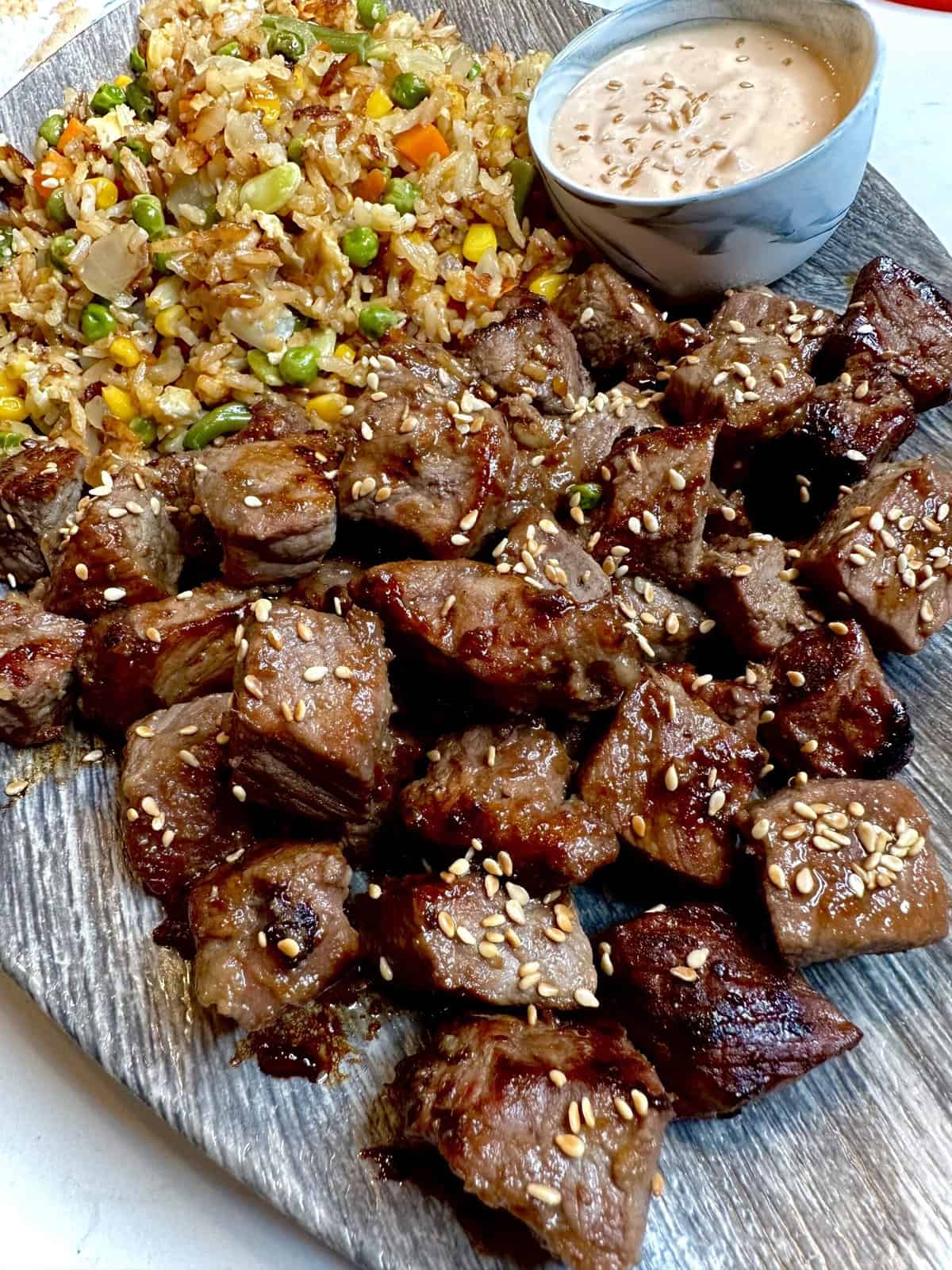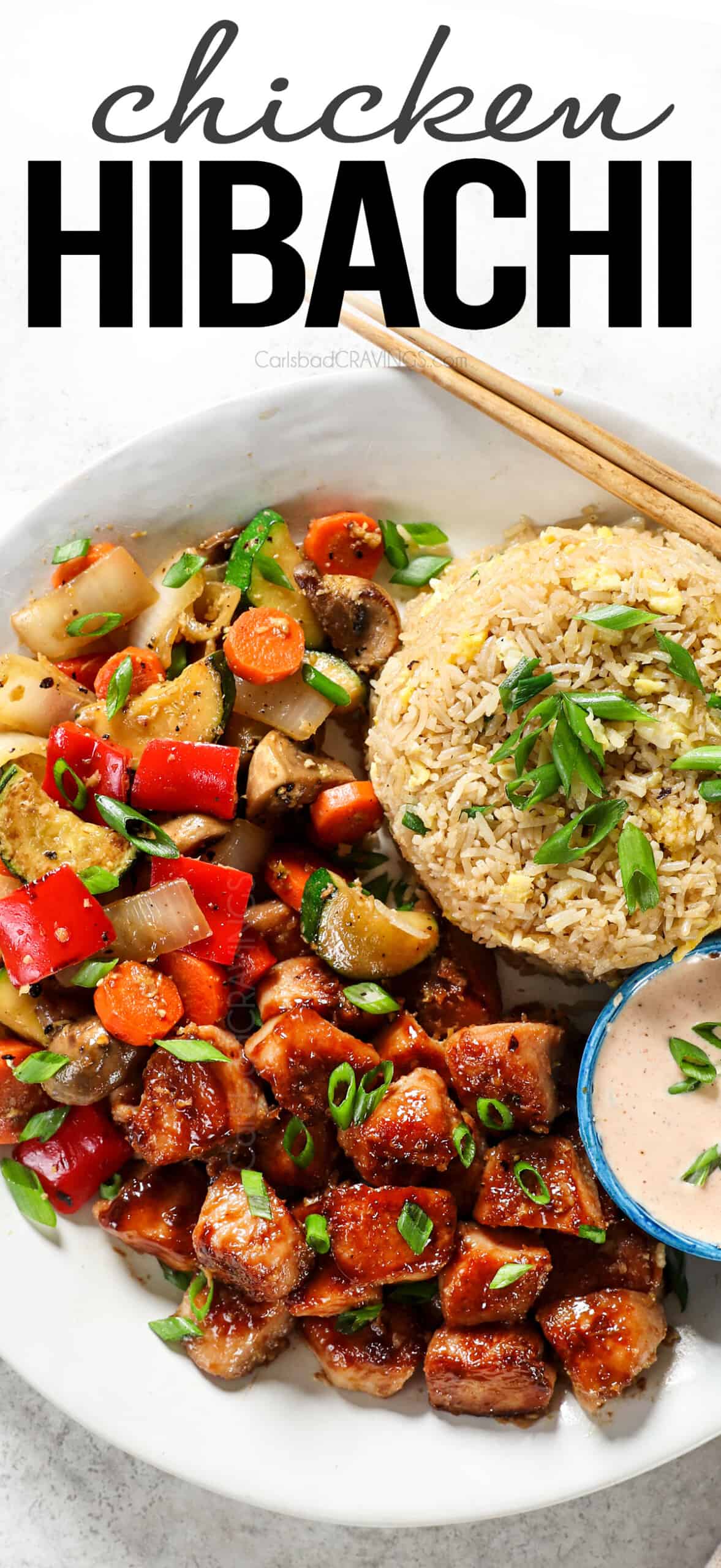Do you ever think about that amazing sizzle and incredible flavor you get from a restaurant meal, particularly when it comes to something like hibachi salmon Benihana serves? It's a dish that, you know, really captures the spirit of Japanese cooking, bringing together fresh fish with that special, cooked-right-in-front-of-you charm. For many, that Benihana experience, with its lively chefs and delicious food, creates a lasting memory.
There's something truly special about the hibachi method, isn't there? It’s not just about the food; it’s about the show, the sounds, and the smells that fill the air. The hibachi, which means 'fire bowl' in Japanese, is a cooking style that has captured the hearts of many diners. It involves a small, portable grill, and it’s a very direct way to cook things.
This article will explore what makes hibachi salmon so popular, especially the kind you find at places like Benihana. We'll look at the cooking style, what makes it so appealing, and how you might even bring some of that magic right into your own kitchen. It's really quite a delicious journey.
Table of Contents
- What is Hibachi, Anyway?
- The Benihana Magic: Why Their Salmon Stands Out
- Making Hibachi Salmon Benihana Style at Home
- Hibachi vs. Teppanyaki: Clearing Up the Confusion
- Is Benihana Hibachi Salmon a Healthy Choice?
- Frequently Asked Questions About Hibachi Salmon
What is Hibachi, Anyway?
The term hibachi, which translates directly to 'fire bowl' in Japanese, describes a very old Japanese heating device. In its traditional sense, it was a ceramic or metal container with charcoal, used for warmth. But, you know, over time, the word came to mean a certain way of cooking, especially in Western restaurants. It's a cooking method that uses a small, portable grill.
This cooking style lets you cook food right in front of people, which makes it a truly engaging experience. The high heat from the grill allows for proteins and vegetables to cook quickly. It also helps them get that nice, slightly browned outside, which is called caramelization. This process gives food a wonderful depth of flavor, actually.
So, when you hear about hibachi cooking today, it usually means that lively, show-filled style of cooking on a flat-top grill. It's a popular choice for those who really enjoy Japanese cuisine and dining out. It’s a very active way to make dinner, so to speak.
The Benihana Magic: Why Their Salmon Stands Out
Benihana is, like, pretty famous for its hibachi experience. They have made a name for themselves by offering not just a meal, but a whole show. Their chefs cook right at your table, flipping shrimp, making onion volcanoes, and just generally putting on a good time. It’s a very interactive way to eat, you know?
When it comes to their hibachi salmon, there are a few things that make it so memorable. First, they use good quality salmon, which is important for any fish dish. Then, there's the way it's cooked: quickly, over very high heat, which seals in the juices and gives it a tender inside with a slightly crisp outside. It’s almost a perfect balance.
The flavor profile of Benihana’s salmon also stands out. They often use a simple but effective combination of butter, garlic, and soy sauce, which really brings out the natural taste of the fish. This simple approach, in a way, lets the quality of the salmon shine through. It’s a taste that many people try to recreate at home, too it's almost.
Making Hibachi Salmon Benihana Style at Home
Bringing the hibachi experience home is more possible than you might think. You can make a delicious hibachi dinner right in your own kitchen. It might not have the exact same big grill or the chef's tricks, but you can still get that great taste. This is actually a fun project for a weekend meal.
Getting Your Ingredients Ready
To start, you'll want some good salmon fillets. Look for pieces that are thick and have a nice bright color. Freshness, you know, really matters here. You will also need some butter, a few cloves of garlic, and some soy sauce. Some people like to use a little lemon juice as well, for a bit of brightness.
For the full hibachi meal, consider adding some vegetables like zucchini, onions, and mushrooms. Rice, of course, is a must, maybe even some fried rice if you're feeling ambitious. You can also make a simple yum yum sauce to go with it, which is very popular. It's really about having all your parts ready.
Have everything prepped and measured before you start cooking. This is called "mise en place," and it helps a lot when you're cooking quickly. It just makes the whole process smoother, so.
The Cooking Process
Heat a large, flat griddle or a heavy-bottomed pan over medium-high heat. You want it to get very hot. Add a bit of oil or butter to the hot surface. Once it's shimmering, carefully place your salmon fillets onto the griddle. You should hear a good sizzle, that's what you want, you know.
Cook the salmon for a few minutes on one side until it gets a nice golden crust. Then, carefully flip it over. Add some butter and minced garlic to the griddle around the salmon. Let the butter melt and the garlic cook for a short time, just until it smells fragrant. Don't let the garlic burn, that's important.
Pour a splash of soy sauce over the salmon and the melting butter. This creates a flavorful glaze. Continue cooking until the salmon is cooked through to your liking. It should flake easily with a fork when it's done. You can also cook your vegetables on the same griddle, right next to the salmon, so they pick up some of those good flavors, too it's almost.
Tips for That Authentic Taste
For that true Benihana feel, consider using a good quality unsalted butter. It makes a difference in the overall taste. Also, don't be shy with the garlic; it adds a lot of flavor. Fresh garlic is always best, naturally.
High heat is key for getting that caramelization on the outside of the salmon. This gives it a slightly crispy texture and a deeper flavor. Make sure your griddle is hot before you put the fish down. It really helps create that signature crust.
If you want to go the extra mile, try making your own yum yum sauce. It’s a creamy, slightly sweet sauce that pairs wonderfully with hibachi dishes. You can find many recipes for it online, for instance. It's a nice addition, anyway.
Hibachi vs. Teppanyaki: Clearing Up the Confusion
Many people use the words hibachi and teppanyaki to mean the same thing, but they are, in fact, a little different. My text explains that hibachi is a traditional Japanese heating device, a 'fire bowl.' Historically, it was a small, portable grill with charcoal. Teppanyaki, on the other hand, refers to cooking on a 'teppan,' which is a large, flat iron griddle. This is what you typically see at places like Benihana.
So, while the experience of a chef cooking in front of you is often called "hibachi" in Western countries, the actual cooking surface is usually a teppan. The high heat of the teppan allows for that quick, even cooking and caramelization of proteins and vegetables. It's really the surface that makes the difference, you know.
Both methods offer a fun, interactive way to eat, and both are popular for Japanese cuisine. Understanding the difference just gives you a little more insight into the cooking styles. It’s a small detail, but it’s interesting, to be honest.
You can learn more about Japanese cooking on our site, which might help clear up other questions about different styles. It's a rich area to explore.
Is Benihana Hibachi Salmon a Healthy Choice?
Salmon itself is a very good food choice. It’s packed with omega-3 fatty acids, which are great for your heart and brain. It’s also a good source of protein. So, in that way, hibachi salmon starts off as a healthy option. It's pretty nutritious, generally speaking.
However, the way it's prepared can add things like butter and sauces, which can increase the calorie and fat content. At restaurants like Benihana, chefs use a good amount of butter and oil to cook the food and add flavor. This is why it tastes so good, but it's something to consider if you're watching your intake. It's a balance, basically.
When you make hibachi salmon at home, you have more control over the ingredients. You can use less butter, choose low-sodium soy sauce, and load up on extra vegetables. This lets you enjoy the flavors while also keeping it lighter. It's a good way to tailor the meal to your own needs, obviously.
Pairing your salmon with plenty of steamed or stir-fried vegetables and plain rice can also help keep the meal balanced. It’s about making smart choices with the sides and the cooking fats. You can also explore different griddle recipes for healthy options on our site.
Frequently Asked Questions About Hibachi Salmon
Is Benihana salmon healthy?
Salmon itself is very healthy, full of good fats and protein. At Benihana, the cooking method uses butter and oil, which adds to the calorie count. If you make it at home, you can control the amount of these additions, making it a lighter meal. It's about how it's prepared, you know.
What kind of salmon does Benihana use?
Benihana typically uses fresh Atlantic salmon fillets. They focus on quality ingredients to ensure a good taste and texture. The freshness of the fish is a big part of why it tastes so good. It's a key ingredient, basically.
Can I make Benihana hibachi salmon at home?
Yes, you can absolutely make a version of Benihana hibachi salmon at home. With good salmon, some butter, garlic, and soy sauce, you can get very close to that restaurant flavor. High heat and fresh ingredients are important for success. It’s a fun dish to try, actually.
Making hibachi salmon, whether at a restaurant or in your own kitchen, offers a delightful way to enjoy Japanese flavors. The experience of cooking over high heat, watching the ingredients transform, is part of its charm. It’s a meal that, you know, really satisfies.
So, why not give it a try? Whether you visit a Benihana or decide to fire up your own griddle, this dish is a delicious choice. It’s a great way to explore different cooking styles and enjoy a fantastic meal. It’s really quite simple, too it's almost, to get started.
For more insights on cooking techniques and delicious recipes, you can visit Serious Eats. They have a lot of good information, so.



